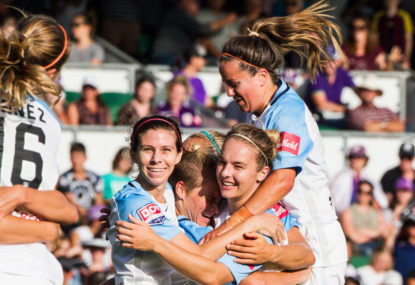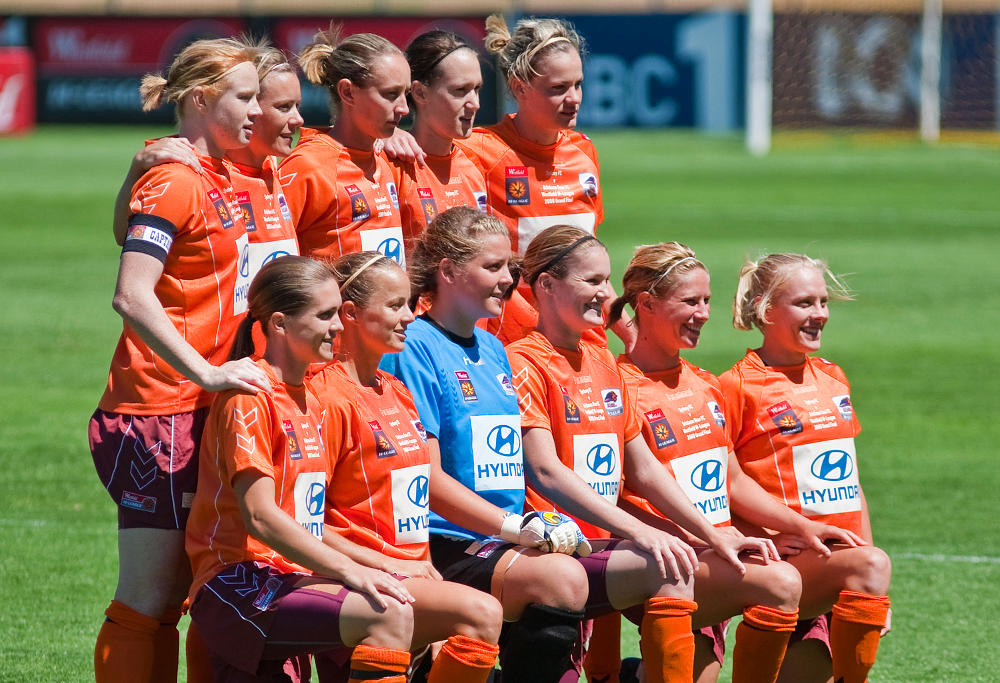WATCH: Manchester City can't believe their luck after missing first-half sitter of a tap-in
Not only did Erling Haaland's header hit the bar, but Bernardo Silva missed the rebound tap-in that came off his knee. Manchester City went…

The Geelong footballing fraternity has long been waiting for an A-League team to call their own. The Victoria Patriots working group, formed in January this year, are fighting hard for the cause.
However, the stiff competition the Victoria Patriots are facing from other bids around the country, along with the significant cost of running an A-League team, means the dream is a bit too far from reality at the moment.
There is another option however to put Geelong on the national footballing stage, something that is perhaps more realistic than most may think – a team in the women’s Westfield W League!
As the W-League enters its 10th season, the calls are getting louder for the league to increase from nine teams to as many as 12.
The Victoria Patriots have remained relatively quiet on any plans they have for a team in the national women’s competition, but surely making any sort of footprint on the national stage is vital for the region’s footballing aspirations.
Obtaining a W-League licence might initially be a more feasible way to go.
Female football in the Geelong region is thriving with playing numbers increasing at such a healthy rate that almost 25 per cent of the region’s registered participants are female.
In 2017, we have 34 mini roos girls teams, 16 junior girls teams and 15 womens teams playing in the local competition.
The region also has a representative in the women’s FFV State League competition with Lara United competing in State League One. Former Lara secretary and current Women’s Task Force committee member Rebecca Horrocks believes a W league team would be a massive boost for female football in the region.
“I think a W League team based team out of Geelong would be great”, she says. “The women’s task force has worked really hard over the past 18 months or so to build the numbers back up in the junior girls’ leagues, to have a locally based W League team for them to watch and aspire to can only be a positive thing”.

(AAP Image/Tony McDonough)
Geelong’s sole WNPL club Galaxy United are flying high in 2017 with the seniors currently on top of the ladder, after making the grand final in their inaugural season last year.
The talent coming through among the under 13, under 15 and under 18s Galaxy teams is very promising and it would be fantastic for these girls to have the chance to aim for the next level and represent their home town on a national stage.
“We have the local women’s comps, State League One at Lara and Galaxy United, so we have a pretty good pathway for our local girls, but I think a W League team would really show that we’re serious about women’s football in Geelong”, said Horrocks.
At the moment only Melbourne Victory and Melbourne City represent Victoria in the W-League and with a total of only 40 spots available on the playing list of both clubs, it leaves very little opportunity for Geelong’s female footballers to push further and have a chance to shine in the highest league in the country.
The cost of running a W-League club is estimated to be around $200,000 per season ($50,000 provided by FFA) with the salary cap set at a meagre $150,000. While this figure should increase in the next few years as the ladies get a justifiable pay increase, it isn’t going to break the bank, meaning it is a very affordable option.
In fact, Perth Glory only a few seasons ago spent just $46,000 of their salary cap and made the grand final!
Of the nine existing W-League clubs, eight are linked with the A-League. Canberra United however, the only stand-alone W-League club in the land, have proven success for a women’s team can happen without their being an affiliated A-League team.
Canberra have won two W-League championships already and have produced Matilda’s stars such as Michelle Hayman and Ashleigh Sykes.
There is every reason to believe female footballers in Geelong can be just as successful given the right opportunity. Galaxy’s Annabel Martin made the young Matilda’s squad for the Asian Football Federation’s Women’s Championship in Myanmar last season.
With better coaching and funding being made available via a team in the national league, more young ladies from Geelong can also reach such lofty heights.
Natasha Robinson, who play’s senior football for Barwon Soccer Club and has coached girls’ mini roos teams, believes having a Geelong-based team would be just rewards for the growth of female football in the region.
“Over the past three years alone the numbers are booming not just at Barwon but across the whole region”, she says,” I think it would be great to see a women’s team here because there are a lot of talented girls and women coming through, I’ve seen this as a player and as a mum of a girl playing in Geelong”.
A club in the W-League would not only reward the talented females in Geelong, it would also encourage the local and state governments to invest more money into much needed footballing facilities across the region.
There has been a 30 per cent increase in football participation in Geelong in the past two years with nearly 4,000 registered players in 2017. An improvement in facilities for both males and females would help support this rapid growth which can only help the region’s push for an A-League team as well.
Ultimately the goal would be to get a rectangular and football specific stadium but Kardinia Park is unused over the summer months and would be a great home ground initially. Galaxy’s home ground of Banyul Warri Reserve in Torquay is also another potential venue.
Obtaining a sponsor could prove a challenge but apart from the Geelong Cats AFL team, the region has very little exposure on the national stage in any sporting competition.
Having a Geelong-based W-League team, along with the increased TV coverage of the women’s game, might attract corporate support from local sponsors who are eager to advertise their product nationally during the summer months.
This sort of support could also be a shot in the arm for clubs like Galaxy United and local Geelong clubs who could feed of this. More exposure for the beautiful game locally can only help provide funding to put more resources and infrastructure back into the game.

(Image: Camw CC BY-SA 3.0)
With the women’s AFL taking off earlier this year and the Cats making all the right noises about getting a team into the elite women’s competition, FFA may want to quickly push ahead and get a W-League team into the fast-growing Geelong region as soon as possible.
This will help to consolidate the growth of female football in the region and minimise the risk of losing local ladies to the oval ball shaped game.
“With the women’s AFL having gained such momentum this year and so many of our local football women switching to AFL due to the opportunities to play at a high level, it’s really important to show our young girls that we believe in them and are willing to provide them with every opportunity that we can”, agrees Rebecca Horrocks.
The bottom line is Geelong needs a women’s sporting team on the national stage. It would be great if the world game could facilitate this. Young girls running around on a freezing weekend morning need to be able to dream big, a W-League team in the region is the perfect way to inspire this.
We will leave the final word to the Geelong region’s first female soccer president, Kylie Chapman from Geelong Rangers. “Women playing football in Geelong are awesome, let’s give them the chance to shine!”